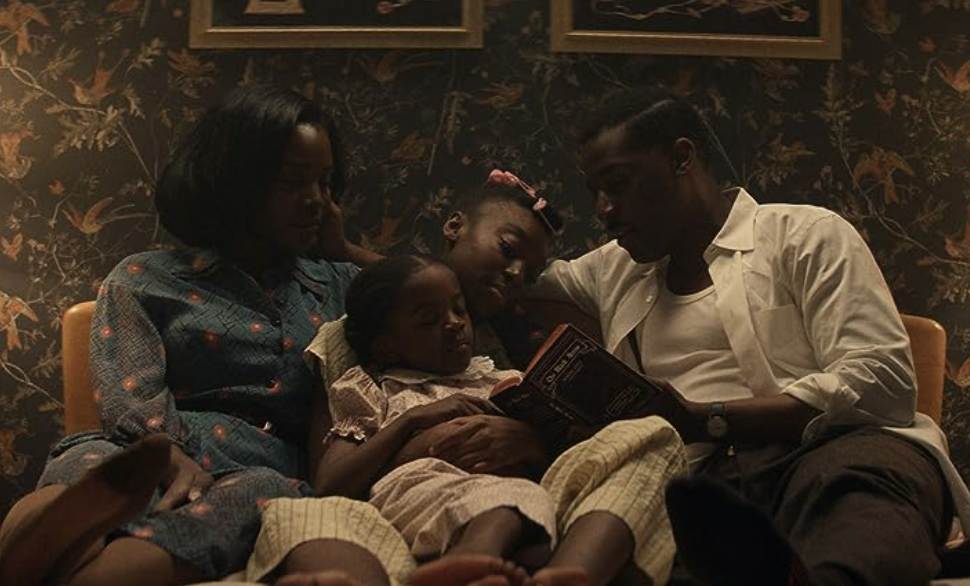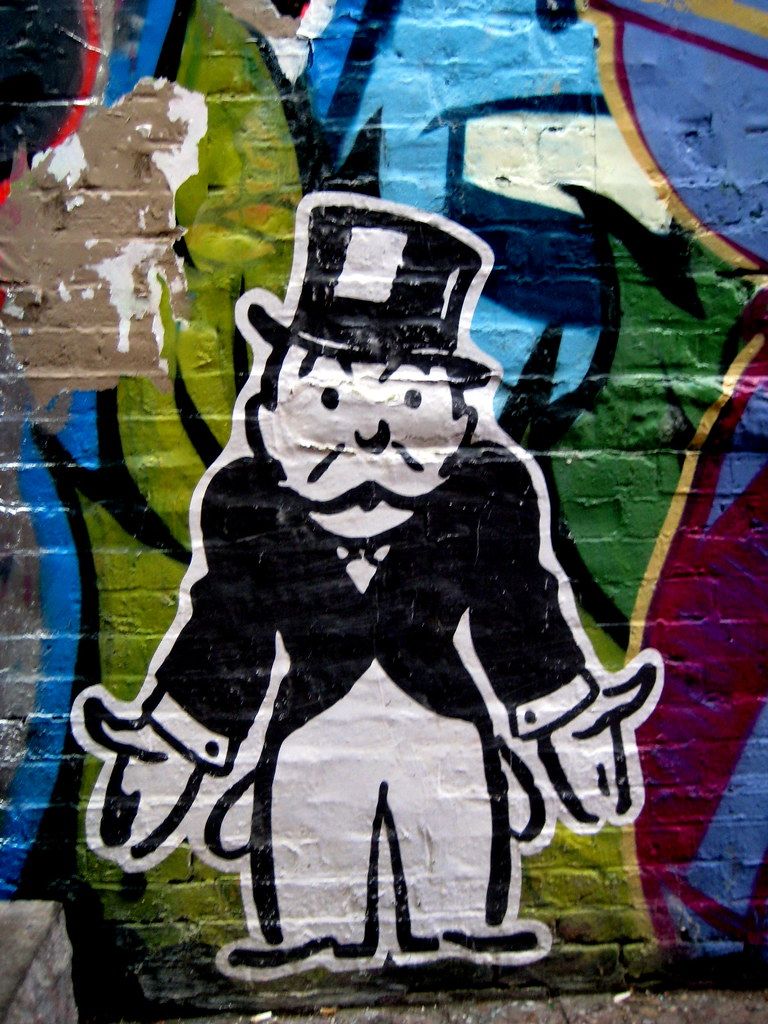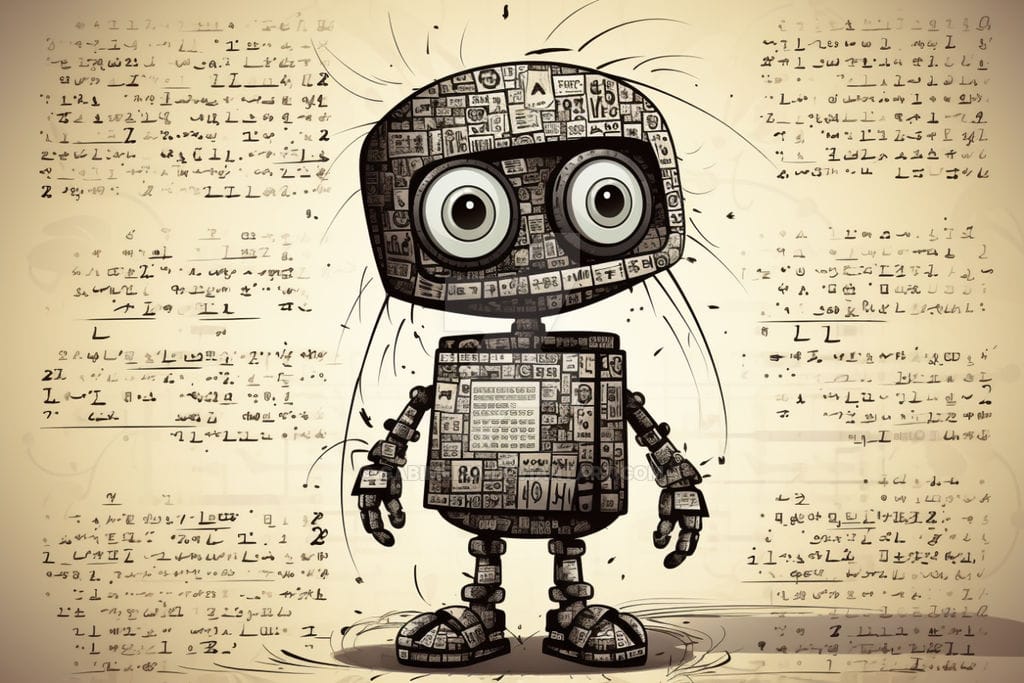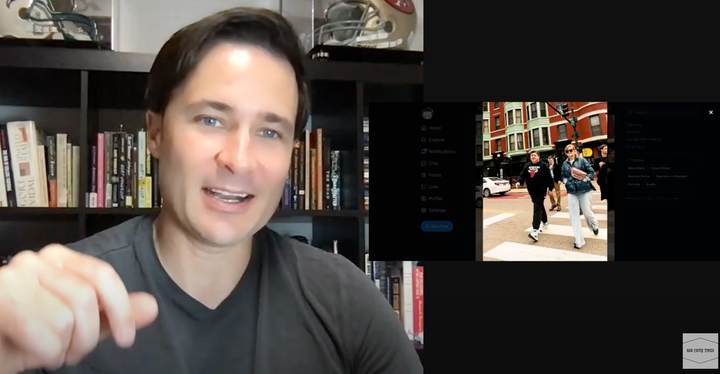White Supremacy Is Sheer Terror
Americans refuse to face the nation's past. More than ever, we turn from it, hide from it.

Finding a reason to hate Amazon Prime’s “Them” isn’t difficult.
It is degradation porn, exploitative of black Americans’ historical traumas, and shocking for the sake of shock value. Critics have called for the show – ostensibly about the horrors of redlining – to be removed from streaming services, to be scrubbed from existence. The most ardent censorship opponent might agree with a shrug after watching the wrenching ten-episode series.
In “Them,” the Emorys, a black family who moves into all-white East Compton, California, in the early 1950s after being driven out of North Carolina by murderous whites, are terrorized by virulent racists surrounding them in their little postwar suburban neighborhood. The terrorism wrought by martini-guzzling suburban housewives and their blue collared husbands isn’t enough for the makers of “Them,” somehow. A loving family determined to emerge from the trauma that has brought them to California, the Emorys are also, for some reason, haunted by ghostly specters.
Maybe the viewer can look beyond the barrage of harrowing violence that might make you, like me, stay up at night wishing the images would cycle out of your thought stream. But the makers of “Them” did what can only be kindly described as the unforgivable: They gave a supernatural origins story to redlining in California.
But wait, you say. The origin story of redlining – the deeply discriminatory systematic denial of property and other services to people of color – is the vile racism at the heart of white Americans. That’s it – that’s the story. It’s not complicated. Many white people wanted (and continue to want) a racially pure utopia, and would deploy any and all tactics to secure their lilly white nirvana. There’s evil in the unshakable belief that this land is my land, not your land. This absolute sureness in white people’s birthright manifests in decidedly evil ways, such as the Atlanta massacre of 1906, when upwards of 100 black folks were murdered by white mobs and cops, and in the 1921 Tulsa massacre, when the city’s so-called Black Wall Street was ransacked by white citizens and cops who maimed and killed black people indiscriminately.
These crimes are not taught in history curriculum because white Americans can’t bear to open their eyes to the evils of their forefathers, and will not allow their children to cast their eyes upon the treachery wrought by the defenders of white supremacy. In the early-1950s world of “Them,” these crimes against humanity were indeed remembered, but only as the good old days.
Subscribe to Bad Faith Times for free or support BFT with $5 a month
“Them,” at first, does a good enough job of illustrating the toxicity of systemic racism. It pulls no punches in showing redlining as a truly vile practice, used by amoral mortgage companies to stop black and brown populations from securing loans to buy homes in white neighborhoods and deny them funds to improve their current homes. It was all perfectly legal until Congress in 1968 finally acted and barred the practice in the Fair Housing Act, though snakes in the the housing industry continued to find ways to discriminate against brown and black homebuyers for years afterward.
This refusal to serve black families the same way white families were served – even high-income black couples were unable to secure home loans or were gouged with sky-high interest rates – had a cascading effect that wrought untold social ills on communities of color, such as political, linguistic, cultural, and physical isolation. Ever-shrinking housing and unemployment opportunities led to underfunded, failing schools, crumbling infrastructure, and of course, a massive and unrelenting police presence in crime-ridden areas created by redlining practices. A cursory reading of redlining’s history leaves one with no doubt that the system was, in short, evil.
“Them” is among the projects of the Trump era to examine the black American experience through the all-too-appropriate lens of horror, and it offers a very different and supernatural version of how redlining came to be in the Golden State. Yes, supernatural, as in mystical, as in magical. It’s the kind of explanatory backstory that can excuse and whitewash generations of racism that hardened into systemic discrimination, tough to see, difficult to address, but there at every turn. It’s those systems that continue to thrive at the bleeding heart of the American Experiment. In explaining the originals of evil, Episode Nine of “Them,” Covenant II, breaks the first rule of horror: Explaining evil.

The show’s racism origins story, heavily influenced by David Lynch’s hourlong origins story of the evil that pervades Twin Peaks in the show’s 2016 reboot, starts in the 1850s with a white man named Hiram Epps on bended knee before the graves of his wife and son, who died in the floods and bitter cold of the previous winter. He’s heartbroken and bitter, seeking a salve for his pain. He’s speaking aloud to God, thanking him for guiding the community through another treacherous winter, asking the question that arrives on everyone’s lips in times of loss: Why? Again and again, Epps begs the Almighty to tell him why his wife and son have been yanked from the mortal coil. Tell me why, he says before the headstones, and perhaps my grief can be assuaged. The Bible, community, the friendship of others – Epps tells God these things mean nothing if he must grapple with the meaninglessness of his loss.
“I want to shake the world to its foundation,” Epps says through gritted teeth, his fury barely contained, his anger toward an uncaring, indifferent God boiling over. “I want to know why you took my son.”
Epps’ pleas to God stop when he’s distracted by a distant whimpering that leads him to a bush, where a small boy is lying in the fetal position, shaking and staring into the middle distance. Epps takes in the boy and raises him as his own. The boy is an answered prayer, in the flesh. That’s Epps’ interpretation of his miraculous turn of luck, anyway.
Years later, the boy, Miles, comes upon travelers whose wagon has broken down in the brutal California dessert. Like the black family at the center of “Them,” these travelers, a black couple named Martha and Grafton, are seeking a home free from the terrors of the American South. Miles retrieves his adopted father and Epps greets the weary travelers without a shred of skepticism, treating them as kindly as he would a friend or family member stranded in the middle of nowhere with a broken wagon wheel and nothing to their name. It’s shocking, almost off putting, to behold a white man in the mid-1800s treating a black couple with respect and dignity.
Epps takes Martha and Grafton back to his town because, he says later, Jesus told his followers to treat the stranger as they would treat him. His biblical justification is a refreshing, if fleeting, moment in an otherwise stomach-churning tale of a white man’s blackened heart.
'These People Are Tearing Our Country Apart'
Epps’ dedication to Christ’s teachings of love and compassion begins to waver as the townspeople become agitated by the presence of Martha and Grafton, both of whom volunteer to work as repayment for the town’s hospitality. Both travelers are unfailingly gracious and grateful to the Epps and his neighbors. The episode is unambiguous about the townspeople’s search for an excuse to hate their dark-skinned visitors. They sneer and blame a very pregnant Martha and Grafton for the Civil War – “these people are tearing the country apart” – and attribute Grafton finding groundwater to the black man’s black magic. Like the men who cast an accusing finger at women they believed to be witches a century earlier, the townsfolk in the “Them” origins story are giddy to justify their hatred of Grafton and Martha. The charges of black magic, of violating the teachings of God Almighty, is all the pretext they need to bring their heart’s desires to fruition. The townspeople were looking for a reason – a racist tradition unlike any other.
Things devolve from there. Epps’ boy, Miles, shows his adopted father a Bible verse – Leviticus 25 – that has been used to justify the enslavement of human beings for centuries. “And you may take the sojourners living as aliens among you, and they may become your property,” Epps reads to the townsfolk, gathered together, arguing about what God wants them to do with Grafton and Martha. “But with respect to your own countrymen, do not rule with such severity over one another.”
The community, sure that their black visitors do not constitute countrymen, erupts into applause. A reluctant smile spreads over Epps’ weathered, bearded face. He’s gotten a taste of power, and he likes it.

Finding biblical justifications to enslave human beings has been a favorite white pastime for centuries. Leviticus 25 is one of dozens of biblical citations a white supremacist might use to cower behind the word of the Almighty, who apparently made some humans less equal than others. There’s Ephesians 6, in which the Apostle Paul – an advocate for slavery – commands enslaved people to “be obedient to your human masters with fear and trembling, in sincerity of heart, as to Christ.” Then there’s 1 Peter 2, which goes a step further in commanding enslaved people to accept their arrangement: “Slaves, be subject to your masters with all reverence, not only to those who are good and equitable but also to those who are perverse.”
There’s no shortage of Bible verses offering cover to racists bound and determined to subjugate, torment, and exploit black and brown human beings. And what God wants, God gets. It’s like any time in U.S. history where a problem had to be created to apply a solution favored by bigots. Want to restrict voting access in poor areas and communities of color? Invent a fanciful story of widespread voter fraud. Want to prevent transgender people from using their preferred public restroom? Create a reality in which dress-wearing men are barging into women’s bathrooms across the country, molesting and harassing ladies and little girls. Anti-abortion activists and lawmakers – who operate exclusively in bad faith – have spent half a century concocting realities that would require the end to legal abortion care.
Bigots are expert at crafting a reality that requires their laws and policies, fueled by their petty hatreds.
Back in his living quarters, after the town cheers on his reading of Leviticus 25, Epps is introspective and reluctant to act on the town’s ill intentions. “Where is the glory in treating these Africans, who came to us in such desperate need, as if they were mere property?” Epps, known among his people as a prophet, asks the Lord before brusquely dismissing doubts about what God wants. The old man begs God to “erase the last lingering doubts from this broken soul and let me see ever more clearly the wisdom of your ways.” God quickly provides clarity for his servant. “Your word is quite clear,” Epps whispers. “I will follow your word with a joyful heart.”
He’s made up his mind. The people’s bloodlust will be quenched, as God commands.
What transpires is gratuitous and stomach churning and perfectly in line with the show’s shock value. The fate of Martha and Grafton is potentially traumatizing in an era of renewed racial strife, wherein we log on and watch videos of black and brown bodies brutalized and murdered seemingly every week. I won’t describe what the townspeople do to the strangers who meant them no harm; it’s all too reminiscent of the torture-porn horror genre that emerged amid the U.S. military’s embrace of torture during the early days of the so-called War on Terror and its various murderous misadventures. Martha and Grafton are killed, and an ensuing fire brings the same fate to those who looked on with glee as two innocents – one pregnant – cling to life.
Nothing about the show’s horrifying spectacle is fictional. Seventy years later, white families in the South would dress in their Sunday best to watch black people be publicly lynched, dismembered, and hanged, either with the state’s blessing or its conveniently blind eye. Whites would eat and drink and socialize while a life was extinguished, while their community became that much purer. The suffering of the Other has always been entertainment for racists.
It’s only after fire engulfs the town that we – along with Epps – learn that God wasn’t, in fact, listening when he knelt by the graves of his wife and son. It was not God who sent him Miles; it was the devil. Trapped in the basement of a burning building, Epps strikes a deal with the devil. The old man can forever avoid suffering if he agrees to “break” black folks who dare infringe on white communities. He’ll be Satan’s racist boogeyman. Epps shakes on it, dies, and a century later, he’s haunting the Emory family in postwar Compton, California.
That the show felt compelled to create a white supremacist boogeyman seems redundant. The whites of 1950s Compton were doing a fine enough job, more real and more terrifying than any ghostly presence.
Attributing racism to the devil marked a strange turn for a show featuring several scenes in which white people carefully and diligently find ways to discriminate and exploit black families seeking a new home away from Jim Crow. “Them” has an early-season scene where bankers and real estate higher-ups mark up a map of the Los Angeles suburbs, crafting an insidious plan for how they can take advantage of black men using their GI Bill benefits to build a new life on the west coast. They would bilk them of their hard-earned savings and government benefits. They would charge exorbitant interest rates on California properties. Satan didn’t draw lines on a map or hike up interest rates on black families’ mortgages. A demon didn’t inhabit the bodies of the wealthy bankers cutting odious deals with each other. It was a conscious choice. “Them” in its earliest episodes is clear: Racism and discrimination is a deliberate decision among hate-filled white people who do not see black humans as human at all.
Fast forward half a season and you find yourself cringing at the backstory of how this came to be – how satanic energy pervaded the hearts and minds of whites in the wild west. It’s baffling and disappointing. A generous interpretation of the show’s redlining origin story is that the white people who participated in the systemic degradation of black families were indeed evil. Not misguided, not misunderstood, not confused, not uneducated. Racists were – and are – the disciples of Satan himself, the show argues. They fully understand its consequences and disregard the destruction of human beings and the sanctity of their lives.
The pettiness of white people’s hate can be seen throughout “Them.” It brought to mind P. Djeli Clark’s “Ring Shout,” a novella about demons that feed on the hatreds of white people in the Jim Crow South. In the book’s closing chapter, the boss demon tells the protagonist that the fear and anger and hatred of white people is weak compared to black people’s fear and anger and hatred because the latter is justified, is real, while the former is based on nothing tangible. The army of demons in this small Georgia town in the 1920s pines to feed on the unfiltered rage of black folks who have endured a lifetime of suffering for no reason other than the color of their skin. American blacks, the demon says, have a reason to hate. Whites have no reason at all. They are, the demon says, pathetic.
In the backstory to “Them,” the pitiable nature of racists is laid bare. They are contemptible and wretched. They are unworthy of love and forgiveness. They belong in hell.
The Slave Code And All Its Hellishness
Author, critic, philosopher, and civil rights advocate James Baldwin often used his platform to describe the boiling anger of being black in America. In a 1961 radio interview, he eloquently explained a sense of rage borne of hopelessness.
“To be a Negro in this country and to be relatively conscious is to be in a state of rage almost, almost all of the time — and in one's work. And part of the rage is this: It isn't only what is happening to you,” said Baldwin, whose fictional works give chilling insight into the fear and anxiety central to the black American experience. “But it's what's happening all around you and all of the time in the face of the most extraordinary and criminal indifference, indifference of most white people in this country, and their ignorance. Now, since this is so, it's a great temptation to simplify the issues under the illusion that if you simplify them enough, people will recognize them. I think this illusion is very dangerous because, in fact, it isn't the way it works. A complex thing can't be made simple. You simply have to try to deal with it in all its complexity and hope to get that complexity across.”

America’s salvation, Baldwin argued, could only come with the painful acknowledgement of our collective past, of the brutality and unrelenting horrors faced by generations of black people. The nation’s failure "to accept the reality of pain, of anguish, of ambiguity, of death has turned us into a very peculiar and sometimes monstrous people," Baldwin said. Even in the aftermath of the 2020 Black Lives Matters uprising, we do not face our past. More than ever, we turn from it, hide from it. White conservatives deny it. White liberals wince at it. It’s too ugly to gaze upon. Casting our eyes toward it would require a reckoning that would extinguish the justifications for white supremacy.
And without white supremacy, what will become of white people in the United States? What will black and brown people do once in power? Will they treat whites the same way whites have treated them? The racist says yes, of course, because the racist can conceive of no other relation between human beings but dominance and subjugation.
Baldwin’s honesty about the racism throbbing at the center of the American Experiment, and the fear and loathing it created among black folks, lasted into the 1980s. “What we are dealing with really is that for black people in this country there is no legal code at all,” he told the chair of Princeton’s Department of African American Studies in 1980. “We’re still governed, if that is the word I want, by the slave code.”
It is a reality we see in all its horror throughout “Them.” The Emorys, among the few black families to access the fruits of the country’s postwar economic boom, are greeted with the same revulsion and disgust in 1953 that Martha and Grafton experienced a century earlier. Dressed in handsome suits and pretty dresses, living in a lovely little home with a lovely little yard, the Emorys live life outside the legal code, trapped in the slave code that was not snuffed out by law, but kept alive by the descendants of Hiram Epps and his ilk.
The Emorys, the family at the center of “Them,” didn’t need to be haunted by the wraiths that tormented them. The violent oppression of black Americans requires no supernatural element to be made frightening. The Emorys’ flesh-and-blood white human neighbors were terrifying enough.
Follow Denny Carter on Bluesky at @dennycarter.bsky.social.






Comments ()